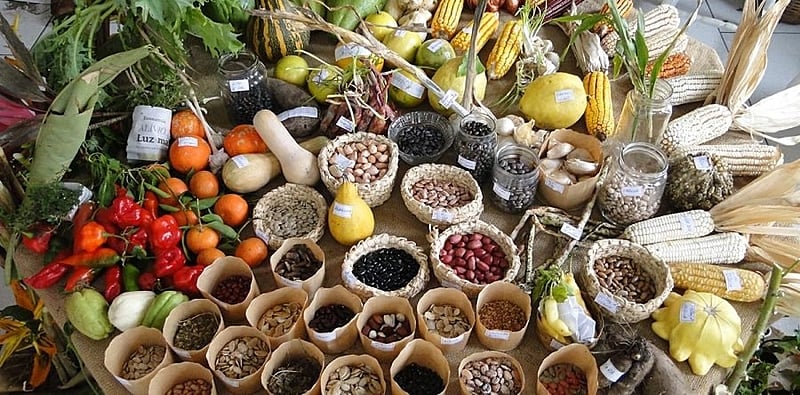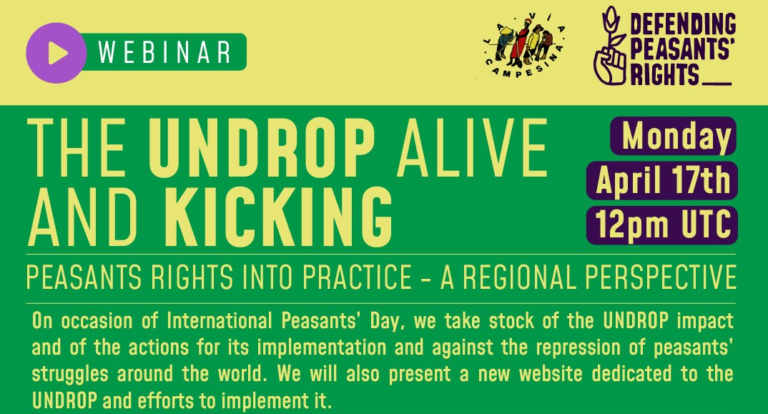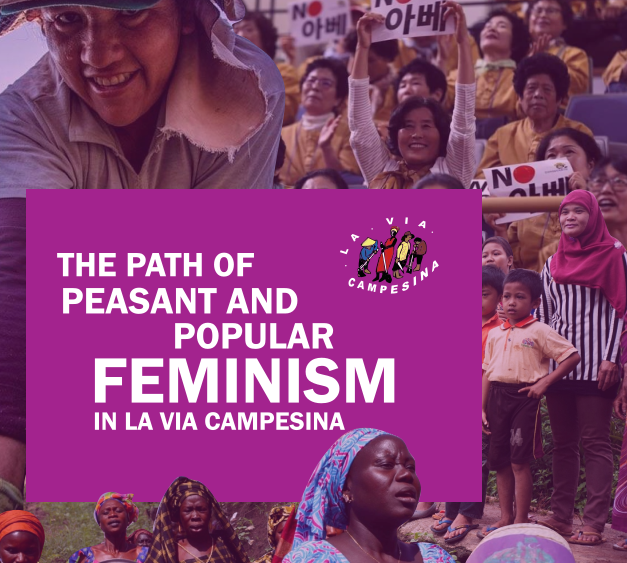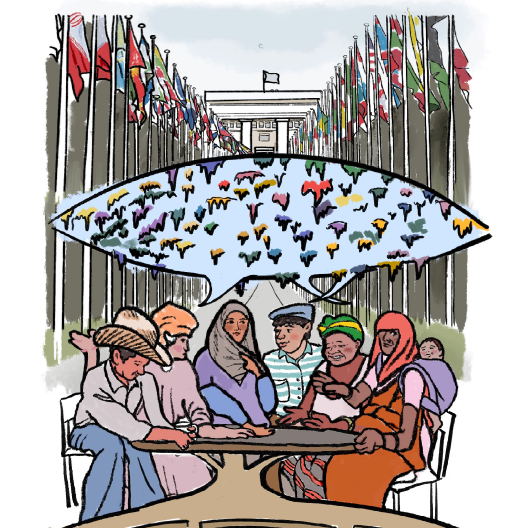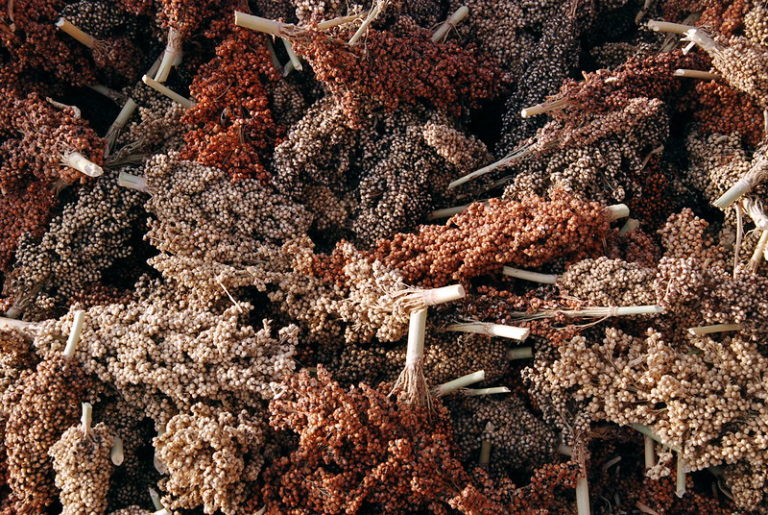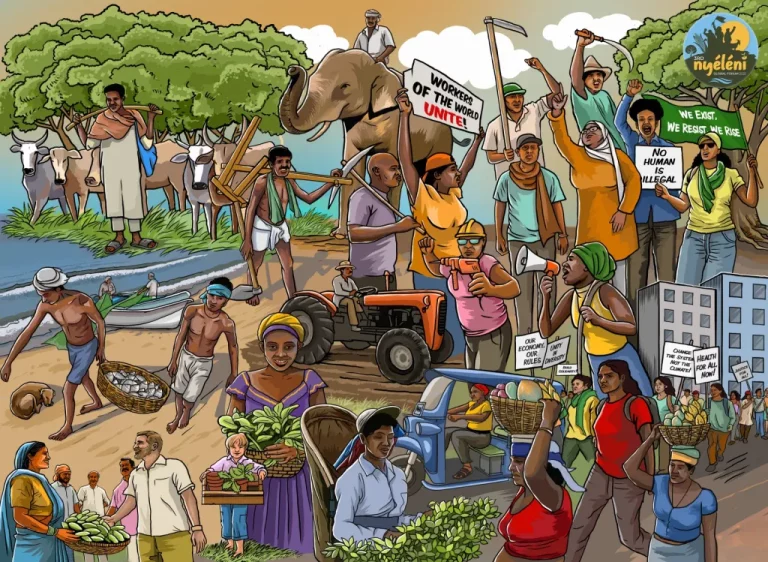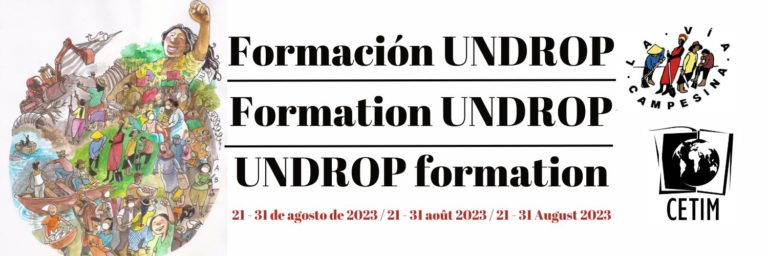Synergies and Complementarity between Agroecology and the UNDROP: The Example of Brazil
Photo: MST (Brazil)
This article draws on the example of Brazil to illustrate the synergies and complementarities between agroecology and the United Nations Declaration on the Rights of Peasants and Other People Working in Rural Areas (UNDROP).
What do we actually mean by agroecology? In summary, one could say that agroecology is a life project: living in greater harmony with nature. However, this concept has also undergone many reinterpretations. Agroecology seems to have become fashionable worldwide, especially after Brazilian José Graziano da Silva, as Director-General of the FAO, opened ‘a window in the cathedral of the Green Revolution’ through it. What is the problem with a term being fashionable? That people try to use it for almost anything. If, for example, we start from a concept of agroecology that is reduced to science, then there is a danger of neglecting it as an agricultural practice and a social movement! We could then imagine it as something that arises more from academic activity. It thus becomes reduced to an agricultural science subject, and could also be called something else.
For us, however, agroecology is first and foremost a farming practice. And if agroecology can be a path to food sovereignty, then we must clearly ask whether this is with or without peasants. After all, agroecology emerged in Latin America as a peasant response to the negative effects of the so-called Green Revolution. Peasants should therefore have a central role in agroecology.
The UNDROP clearly affirms the obligation of States to promote agroecological production (Article 16.4), to adopt appropriate measures for the conservation and sustainable use of land and natural resources through agroecology (Article 17.7), and to protect and promote the traditional knowledge of rural communities, particularly agroecological practices essential for conserving and sustainably using biodiversity (Article 20.2). It also upholds the right of peasants and other rural peoples to receive adequate training tailored to their specific agroecological, sociocultural, and economic contexts (Article 25.1).
Food sovereignty – enshrined as a rural peoples’ right in Article 15.4 of UNDROP – is about food production. And agroecology is about peasants. In other words, it is about agriculture. However, agriculture should not be reduced to economics. Agriculture is also culture, i.e. agri-culture. And culture is knowledge. It is nourishment. It is history. And it is life! And this is where the problem of agricultural science comes into play. Because peasants and indigenous peoples still see the world as a whole. When a peasant grows all kinds of plants, it is also because he/she can feed himself or herself from them! It is important to realize that peasants have existed for 10,000 years and that many of them have managed to be self-sufficient!
So, if everything else goes wrong, peasants still have their own food! It is the only profession that can claim this. Or will a shoemaker eat shoes, for example? Or will a tailor eat clothes? No. Only peasants have this autonomy. But what does that mean? It should mean deciding what is produced, who produces it, who it is produced for, how it is produced (some people think that agroecology is only about the ‘how’) and why something is produced.
If we hold the answers to these five questions (i.e., what, who, for whom, how and why), then we have food sovereignty. It is local power. It is self-determination. Can agroecology help to strengthen the right of peasants and food sovereignty? Yes, it can!
I will present ten reasons why peasants and small-scale food producers should practice agroecology in Brazil and in other countries, and make links with the rights outlined in the UNDROP.
1. Agroecology reduces production costs in agriculture. We have already seen operating costs reduced by up to 40 percent in organic farming. This directly contributes to an increase in the final income of peasants, in line with their right to a decent income recognized in UNDROP’s Article 16.
2. Agroecology increases conservation of natural resources. In 1713, Hans Carl von Carlowitz wrote a book entitled ‘Sylvicultura Oeconomica’. Carlowitz believed that sustainability meant not taking more wood from a forest than it could grow back. This idea that foresters should not take more from a forest than it can regrow is the same as that of fishermen who know that they should not catch more fish than nature can replenish. This corresponds to the sustainability philosophy of most indigenous peoples!
Why is this example relevant to agroecology? Because the idea of agroforestry allows us to go beyond agroecology. I think the model that comes closest to nature is the forest. But please, not monocultures of pine or eucalyptus! Forests are diverse. And industrial agriculture cannot use natural resources sustainably. According to this model, everything should be produced as quickly and as much as possible. Nature is thus overburdened and destroyed. And what follows? Investments simply shift elsewhere. Preserving natural resources means considering water, soil and the life in the soil as essential for agriculture, which are also peasants’ rights as outlined in UNDROP’s Articles 17 (right to land), 18 (right to environment) and 21 (right to water). Every farming family wants their son, grandson and great-grandson to continue farming. So, they will not necessarily think that they are planting a tree to use it right away. In 100 years, it may be their grandchild who uses it. That is the idea behind preserving natural resources. An agriculture that is suitable for grandchildren!
3. Agroecology is able to better reward the work of people in rural areas. But how can this be achieved? First of all, the use of labour-saving agricultural technology increases the amount of non-working time, because the dependence on nature means that production time in agriculture is separate from the necessary working time. If less work is required for production but the waiting time until harvest remains the same, this creates either free time or more time for other activities. And how will farming families use this time? At the very least, production will have to be diversified. With agroecology, it is impossible to practice monoculture. The success of agroecology is therefore closely linked to the concept of multifunctionality in agriculture, which means that more can be paid for labour. Better remuneration for labour means that peasants ultimately receive more for their work. Normally they don’t even factor these costs in. But isn’t it precisely labour that creates the value of goods? And if you preserve nature, shouldn’t you be paid more for it? Yes! There are already places in the world where peasants are rewarded for this. They are remunerated by society because, for example, nature-friendly agriculture means lower costs for public health. Every community can do this. If we use fewer pesticides, if we avoid GMOs, we will have fewer health problems and lower public spending. So, yes: it is possible to better remunerate those who work with agroecology, in accordance with UNDROP’s Article 16, which protects peasants’ right to decent income and an adequate standard of living. But that requires more knowledge, and that is another challenge. The time freed up by agroecology can also be devoted to developing knowledge.
4. Agroecology is a way to optimise agricultural ecosystems. It is possible to reduce external inputs in agriculture through agroecology. With agroecology, production is increasingly local and in closed cycles with less energy waste, reducing reliance on long transport routes. This reduces the negative impact on the environment, in line with UNDROP’s Article 18. With agroecology, it is possible to reduce erosion, soil leaching and desertification.
5. Agroecology allows for increased production, which is important to realise UNDROP’s Articles 16 and 15. For example, through mixed cropping, which thrives particularly well in tropical climates. In Brazil, for example, growing corn and beans in the same field ultimately yields more than just corn. Mixed cropping produces higher yields on the same amount of land. Ecological intensification is a solution, especially in countries with limited arable land. This solution is already practiced in many places, as recognized by the FAO. That gives us an advantage. But we should be a little careful, because productivity can decline in the first few years. The balance must first be restored. It is necessary to build up humus in the soil and prioritise plants with diverse roots that allow water, air and organic matter to circulate. Then the soil will regenerate. In these first few years, governments should help peasants. Because in the short term, agroecology may lead to low productivity. But in the medium and long terms, it can actually produce more than the industrial model. There are plenty of reports from peasants in Brazil who have already proven this.
6. Young people and women are protagonists in the agroecological process. And that is very important when it comes to the rights of people in rural areas and their future. So, when we talk about peasants, we must also talk about young peasants – and especially female young peasants, in accordance with UNDROP’s Article 4 on the rights of rural women.
7. There is another aspect of small-scale farming that is consistent with the concept of agroecology: it is the special relationship that farming families have with knowledge. Farming families exchange their discoveries, they share their knowledge, they pass it on. Instead of keeping it to themselves, peasants spread their knowledge within a community, and by doing so they realize UNDROP’s Article 26 on the right to culture and traditional knowledge.
8. There are various ways to make the transition to agroecology, and States should take appropriate measures to ensure that their programmes and policies contribute effectively to the transition to sustainable agricultural models, as stipulated in UNDROP’s Article 16.4. Agroecology can serve as an umbrella under which various forms of agriculture are promoted – many of which we do not yet know because we have not yet made contact with many indigenous peoples who practice agriculture. This type of agriculture can be pointed out as part of what we usually call ‘agroecological’. It is a type that could be described as traditional, but it is not only that. It is also innovative. And it will help us to achieve these 10 goals that we present here, and to realize food sovereignty.
9. One important innovation we need to implement is ensuring market access (enshrined in UNDROP’s Articles 2.6e, 16.3) – along with market education (Article 25) and information (Article 11). In the past, peasants were unable to achieve this innovation on their own. But we have good examples of this in Brazil with government programmes. For example, with the school meals programme and public procurement, through which food is bought directly from local and regional peasant organizations. These initiatives led Brazil to be removed from the UN’s hunger map in 2014. However, after six years of conservative-led governments that dismantled these policies, hunger returned in alarming numbers by 2022, with over 15% of the population suffering from acute hunger – most of them in rural areas! More recently, thanks to renewed efforts by the current government, Brazil was once again removed from the hunger map in 2025.
These institutional markets support the agroecological transition. The organization between peasants and consumers also enables organic food to reach people’s tables, which is an element of food sovereignty. So, it is not just about food security, because food security can mean that someone else feeds you. Of course, if someone is starving, they should be provided with food. But that is an emergency. No one should be made dependent on it. It would be even worse to make farming families dependent on it. If we can produce, process and market food as close as possible to where it is produced, farming families will also be better nourished. And that already increases food sovereignty. When they produce for the region, it also increases the availability of local food. That is what agroecology can achieve. Food security means the availability of food in terms of quantity, quality and regularity throughout the year. But that’s not all! We must also know who will produce this food? Which types of food will be produced? With which technology? With the use of pesticides and genetic engineering, or not? Agriculture without people is not agroecology either. Agroecology is agriculture with people and for people in harmony with nature.
10. But to do this, we must use the latest scientific findings. But be careful: there are interests behind modern science. It is not value-neutral! When it comes to science that serves agroecology, we must remember that without the modern science we have had so far, the industrialisation of agriculture would not have been possible. So, it is not innocent. The science that is to serve agroecology must be different. It must be context-dependent and transdisciplinary, bringing together traditional and scientific knowledge.
This science must not be oppressive or prejudiced, and above all, it must not displace people from their land and home. We must avoid this, as well as pandemics, famines, climate crises – all of that. The real answer to this is connected to our food, the right food and food sovereignty.
Agroecology is about real food produced by peasants, organic agriculture and traditional peoples. UNDROP reinforces the multiple principles of agroecology and food sovereignty. It confirms the primacy of the rights of peasants and other rural communities, and reminds States of their obligation to respect, protect and fulfil these rights. Why is it important? Because we want humanity to continue to exist after us.

